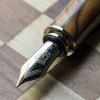Search the Community
Showing results for tags 'slip&seal'.
-
-
- daiso air-seal
- preppy
- (and 6 more)
-
desaturated.thumb.gif.5cb70ef1e977aa313d11eea3616aba7d.gif)
Condition of blue Monami Penna pen I received
A Smug Dill posted a gallery image in FPN Image Albums
From the album: First look
My order of four Monami Penna pens arrived yesterday. I haven't inked any of them up yet; but my initial impression is one of disappointment. The barrel material is very prone to scratching, even from just the cardboard in the retail packaging itself. One of the pens arrived in absolutely appalling cosmetic condition, on account of movement inside the retail packaging in transit. The clear plastic display box took the brunt of the impact of being crushed and is permanently creased and deformed, along with the cardboard frame inside, but otherwise shielded the pen; however, that made for a bit more wiggle room for the pen trapped inside. p.s. I reported the issue to the AliExpress seller, and I blamed the manufacturer squarely for inappropriate retail packaging design, given that the barrel on another pen of which the box was not crushed is also marred by a haze of micro-scratches thus acquired. To the credit of the seller, he took responsibility for inadequate packaging, and offered to send me replacements for the two pens.© A Smug Dill
- 0 B
- x
-
desaturated.thumb.gif.5cb70ef1e977aa313d11eea3616aba7d.gif)
Condition of the other three Monami Penna pens I received
A Smug Dill posted a gallery image in FPN Image Albums
-
desaturated.thumb.gif.5cb70ef1e977aa313d11eea3616aba7d.gif)
Comparing cap seal performance of Platinum Prefounte and Balance pens
A Smug Dill posted a gallery image in Premium Account Albums
From the album: ~Nothing to see here, move along
This chart was taken from a section of the Platinum Prefounte's retail packaging.© Platinum Pen
- 0 B
- x
-
- platinum balance
- cool
-
(and 5 more)
Tagged with:
-
From the album: Chinese pens
These fountain pens are Daiso's answer to the Platinum Preppy, with the clear, lightly coloured pen bodies and spring-loaded inner caps. Unlike the Chinese-made Platinum Riviere PTR-200, which Daiso also sells, they are not co-branded. These pens started appearing, here in Sydney, late in August 2020. I've only ever seen them in one store in the four months since, even though there are three Daiso stores within walking distance of each other. My first impressions are that these pens are of much better product quality than the PTR-200. The nib width grade is not stated anywhere, either on the pen itself or its retail packaging; the nib on the unit I've used writes like a Fine, I'd say.
- 0 B
- x
-
-
The #3776 is a marvellous piece of writing instrument that any passionate fountain pen lover would consider absolutely essential, for building up a collection. Sometimes, it’s one of the top five must haves for people like us, available perhaps at the lowest price given the gold nib. As for me, I never sensed any urgency to get one, as there were a few similar shaped pens (Pilot Custom 74, Sailor 1911 & MB 146) with me. I liked the wide flattish nib and had decided to take a Naka-ai writer later, which would address my desires of getting an urushi lacquered pen in Tamenuri finish. With time however, a few #3776s of my friends passed through my hands and then one fine day the wine red Bourgogne seemed to be unavoidable. I didn't like few of the nibs which I had encountered previously, given their low tolerance to even moderate pressures resulting in higher feedback. The similarly sized and shaped Pilot Custom 74 albeit with a smaller nib, wrote like a dream with just the softness and responsiveness one would ideally want in a fountain pen. The pluses were many if I ended up with the right kind of nib, given a great balance, an unique colour and a air-tight sealing mechanism of the cap. Below links redirects to the same review on my blog with additional eye-candy Platinum #3776 Century in Bourgogne PRESENTATION (6/6) The pen comes in a blue faux-leather gift box, packed with one blue cartridge, a converter, a warranty card and an user manual. I like the simple, no-fuss design of the box with the right amount of protection necessary for the pen. The model number of the pen, in this case tagged to the clip in a small plastic sleeve, PNB-10000 #71, encompasses both the launch price and colour within it. The 10000 refers to JPY 10,000 as the launch price and #71 to Bourgogne, in this case. DESIGNED - CLASSICAL CIGAR (5/6) The #3776 comes with plethora of names and materials ranging from resin to wood to ebonite & celluloids. The ones most commonly purchased across #3776 Century Collection is either the Chartres Blue or the Bourgogne one. The original #3776 series was designed by Japanese playwright Haruo Umeda who was incidentally also known as Mr.Fountain Pen, along with the designers at Platinum, with the intention of creating an ideal fountain pen. The first of the #3776s were made available to general public in 1978. They sold over 150,000 pens in the first six months, gaining popular use. As you might already know, #3776 expresses the height of Mt. Fuji (3776 meters), the highest peak in Japan. This new model however represents the first full model change in over 33 years. You can find a more detailed historical interlude with an amazing review of the Chartres Blue version by Garden Man on FPN. This classical cigar starts with a rounded off finial and a gold plated clip & ring combination, syncing well with concentric cap bands and concluding with a golden dazzle at the end of the barrel. The relatively dark wine red or Bourgogne coloured resin allows light to dazzle through the entirety of the pen. Bourgogne (or Burgundy) is one of France's main wine producing areas. The region is well known for both its red and white wines, mostly made from Pinot noir and Chardonnay grapes, respectively. The pen incidentally gleams in revealing wine red and striking golden hues with ambient light and these effects proliferate with light. The converter shines within, revealing the ink-levels inside. The transparency doesn't give in to all ambience of light, and keeps pacing up with the intensity of red wine. The cap disengages in less than two turns. revealing a golden glaze of the 14k nib. The grip does reveal another knot of glitter, at start of the section here. The barrel further steps down to the section, however it did not affect my writing experience. Injection-moulding threads are somewhat visible at the threads of the barrel and grip, which could have been polished off. Compared to the President nib, the #3776 nib poses serious competition in terms of size and of course flexibility. The cap with a rounded off finial preserves a classical look. A few things etched across a thicker centre band include the symbol p for brand name of PLATINUM, model number #3776 and of course MADE IN JAPAN. An concentric narrow band above renders some differential aesthetics. The simple clip is tension-fit and has a traditional shape, with a faint western resemblance. From top, you can also observe part of spring & screw of the Slip & Seal mechanism inside the finial. This new air-tight screw on cap is supposed to completely seal off the nib tip from outside air, preventing any escaping vapours. The inner cap ‘Slip & Seal’ mechanism was originally designed for the pull-on caps on lower models. In the current design, the forward upraised edge of the section pushes up against the inner cap, the inner cap rotates independently of the outer cap till a spring at the end of the inner cap pushes back the distance, thereby removing the ambient air and achieving an air-tight seal, as seen in this video. This last bit of threads on the barrel (almost the last quarter turn) which activate the air-tight seal in the inner cap, keep the nib from drying out for more than a year, according to Platinum. Overall, the building materials (resin) and the quality of gold plating seem to have improved. The resin seems reasonably resistant to scratches compared to older models but I do see a cap mark on the end of the barrel as I consistently happen to post the pen. FILLING SYSTEM (4/6) As a cartridge converter filler, the supplied convertor is limited by a volume of 0.6 mL although platinum cartridges have an advantage with capacity of more than 1 mL. Unfortunately enough, Platinum stopped manufacturing piston-fillers long back and the last one (70th Anniversary) was released way back in 1989. The #3776 takes in proprietary converters and like all other current Platinum pens and there is an adapter available for international cartridges/converters, whose production is currently stopped. The barrel disengages from the grip section with less than three turns, exposing metallic threads of the section (thus removing the eye dropper possibility). The resin barrel carries the opposite threads inside. The proprietary converter looks cool with its golden trims matching the overall trims of the pen and you can observe the ink levels through streaming transparency of red wine. As you can see, almost the entire converter capacity(albeit limited), remains exposed to your eye. NIB - ALL THAT MATTERS (5/6) The nib #3776 is made up of 14k gold alloy and it comes across in several Japanese widths - EF(Extra-Fine), F(Fine), M(Medium), B(Broad), UEF(Ultra extra-fine), SF(Soft Fine) & C(Double broad). Inscribed within the nib is the symbol of Mt. Fuji’s peak. A hearty breather hole lies above the imprint of a relatively flatly styled nib. Below the etching of #3776 and the brand symbol p, along with nib alloy (14k), width (M) and gold content(585), rest at the far end of the tail. The peaks of Mt. Fuji start parallel to the tines and achieve their summit towards the iridium tipping. These scrollwork are limited to the tines. JAPAN is engraved on one of the faceted shoulders. The nib lays a wet and smooth line and is a tad forgiving to pressure. The black plastic feed for the has spacey and stylish fins and even with the cap open for a while, it does not take an effort to lay a consistently wet line. A small feeder hole at the section end provides ink suction for the converter. This is a redesigned feeder which is wider and thicker than the 1978 one, resulting in a stronger nib alignment. The nib and feed are heat fitted and you are advised not to pull out the unit just for fun. PHYSICS OF IT – RELATIVELY SPEAKING (6/6) The cigar shape of a pen renders comfort and balance for usage. The cap weighs around 10 grams, and I prefer to post the pen to get necessary heft even for extended writing. To take notes or scribble here & there, I don't usually post the pen. The section with around 1 cm girth is another desirable element for longer writing sessions. Along with the converter, the weight and balance are what you would pretty much expect in most of the nicer pens. Length closed ~ 14 cmLength open ~ 12 cmLength posted ~ 16 cmGrip Diameter ~ 1 cmNib Leverage ~ 3.3 cmWeight (with inked converter) ~ 23-24 gWeight of cap ~ 10 g Some snaps of capped, uncapped & posted #3776 with Sailor Pro Gear, Pilot Custom 74 and Pelikan m605 go below for your reference. ECONOMIC VALUE (6/6) The pen retails at around USD 176 in the US or around Rs 10,000 in India, although you can find it significantly lower prices in Japan. I bought the pen at around the street price plus shipping which hovers around USD 80-90. The pen reached me from Pensindia Pune office next day, after placing an order. Honestly, if you are end up with the right kind of nib, this pen is the steal of a deal. It cannot get better than this, given the 14k better-sized gold nib, along with a good body in a comfortable shape. OVERALL (5.3/6) The medium nib lays a width somewhere between a western extra fine and western fine, graced with a wet and consistent flow. With free flowing inks like Waterman, Pilot Standard ones or specific Iroshizukus, the nib glides over paper with great panache. You may feel a bit of resistance, in case of more viscous/shading inks (say MBTB or even Sailors). I did feel some characteristic spring and a hint of softness with the 14k nib. It felt rigid initially, but with constant writing the nib has started to accommodate my pen-pressure with incremental reflexes. The verticals are almost as thick as the horizontals, showing an absence of any unforced line variation. With a decent buffer capacity of the plastic feed and remarkable sealing off mechanism of the cap, the nib starts like a star and glides over the paper with Iroshizuku Yama-budo ink. The ink takes around 20 seconds to dry completely on MD paper, which also points to efficiency as well as economy of Japanese manufacturing. Overall, I am glad that I have finally bought this pen for myself. Thank you for going through the review. You can find other pen and paraphernalia reviews here. REFERENCES Air-Tight Seal of Cap Platinum #3776 Century Website Platinum Izumo - President Nib Review
- 48 replies
-
- platinu#3776
- century
- (and 5 more)

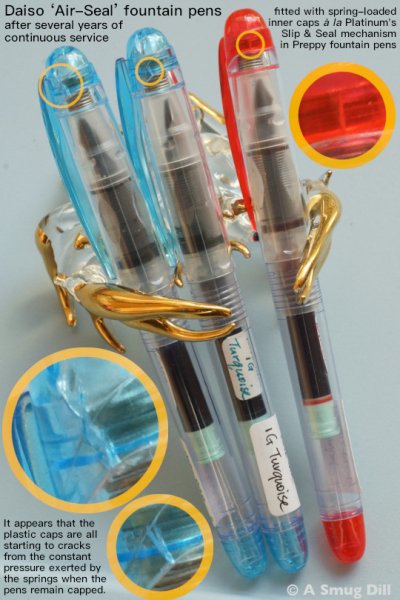
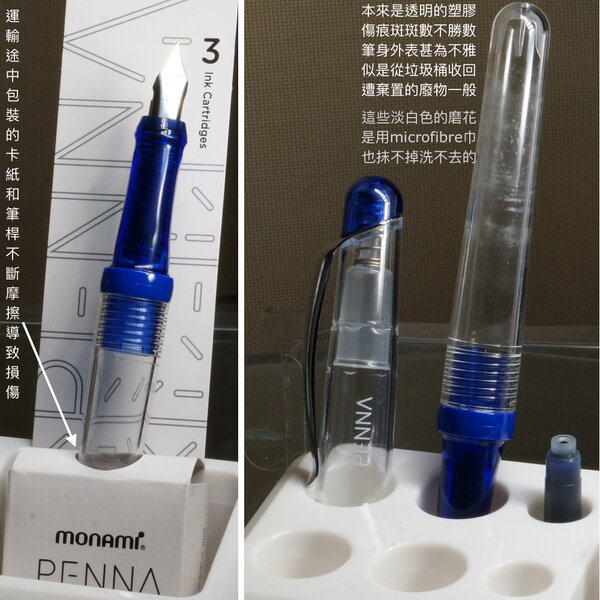
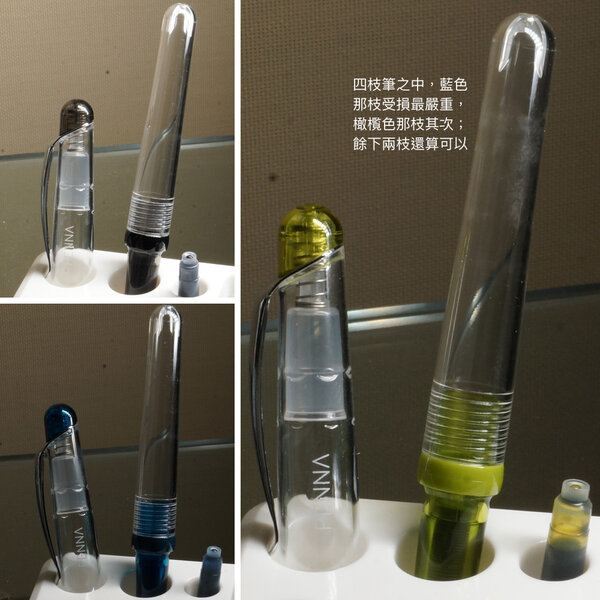

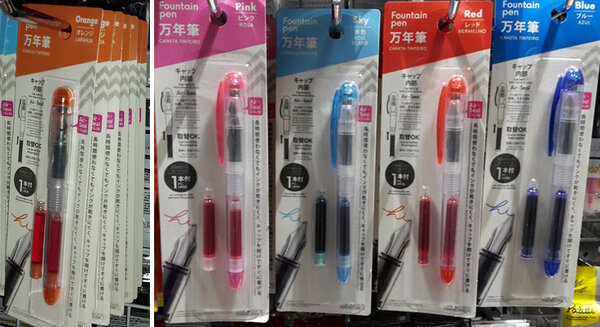
unpacked.jpg.b8a9314319d688d08c5ebd925829ff19.jpg)
